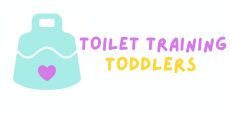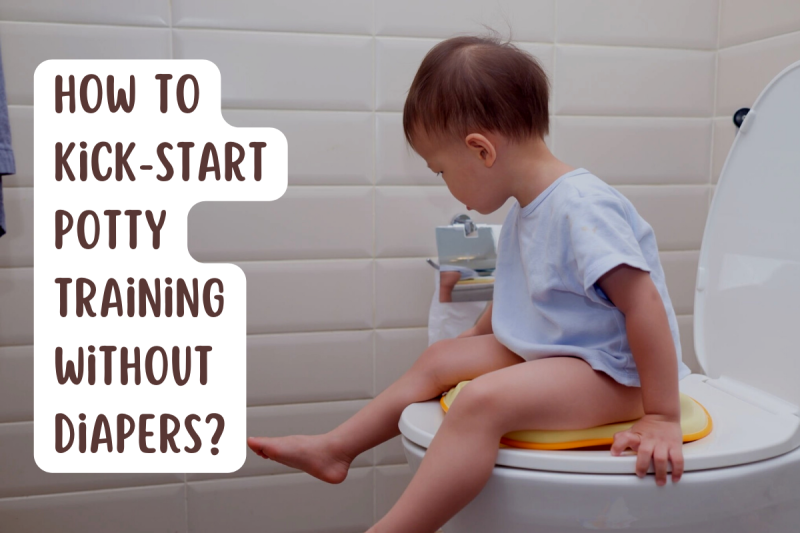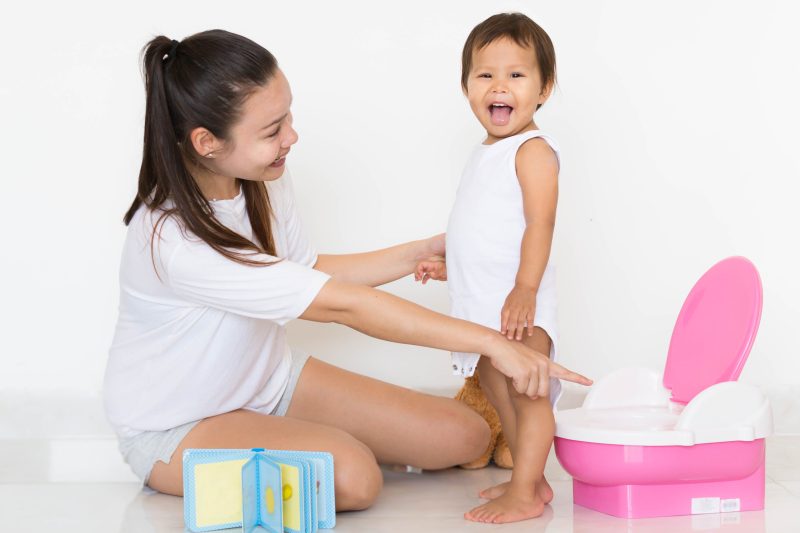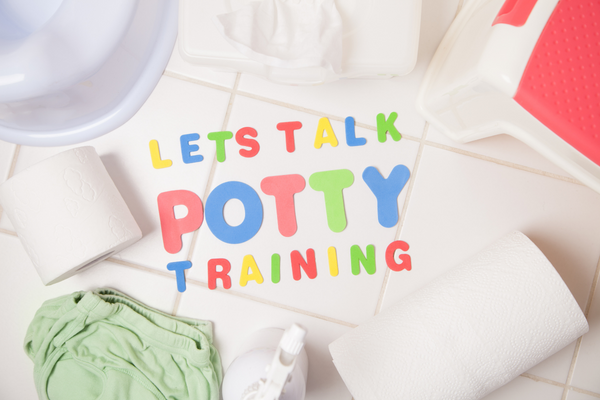Potty training can be a challenging time for both parents and children, but it doesn’t have to be a stressful experience.
In this article, we’ll share some tips and tricks to help make the transition from diapers to potty a smooth one!
Should You Potty Train With or Without Diapers?
Training without diapers is generally recommended as it can help your child understand the concept of using the potty more effectively.
When your child is in diapers, they may not fully realize the discomfort of being wet or soiled, making it harder for them to connect the act of using the potty with the feeling of needing to go.
However, some parents may prefer to use training pants or pull-ups during the transition period to help their toddlers feel more independent and confident.
At What Age Should a Child Stop Using Diapers?
The age at which a child stops using diapers can vary depending on individual development and readiness. While some children may be ready to start potty training as early as 18 months, others may not show preparedness until age three or later.
Watch for signs of readiness, such as staying dry for longer periods, showing interest in the potty, and being able to communicate their needs effectively. Ultimately, the decision to stop using diapers should be based on your child’s individual readiness rather than a specific age.
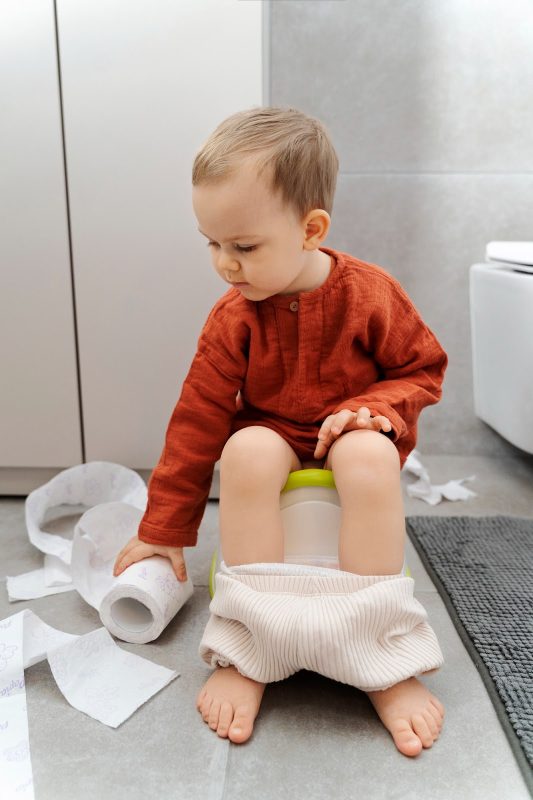
How To Kick-Start Potty Training Without Diapers
Every child is different, and there’s no one-size-fits-all approach to potty training without diapers. However, the following tips can help you kick-start potty training properly:
Watch for Signs of Readiness
As mentioned, look for cues such as staying dry for longer periods, showing interest in the potty, and communicating their needs effectively.
Create a Routine
Establish regular times for your child to sit on the potty throughout the day. It can be after meals or before bed.
Use Training Pants or Pull-Ups
While it’s generally recommended to train without diapers, some parents may prefer training pants or pull-ups during the transition to help their child feel more independent and confident.
Offer Positive Reinforcement
Celebrate small successes, offer praise and rewards, and be patient and supportive throughout the process.
Make It Fun
Use stickers, songs, and books to make training a positive and enjoyable experience for your child.
Lead by Example
Let your child see you using the toilet and explain your actions; this can help them understand the concept and feel more comfortable.
Can You Potty Train Directly on the Toilet?
It’s possible to potty train directly on the toilet. Many parents skip using a separate potty chair and instead use a child-sized seat that attaches directly to the regular toilet seat.
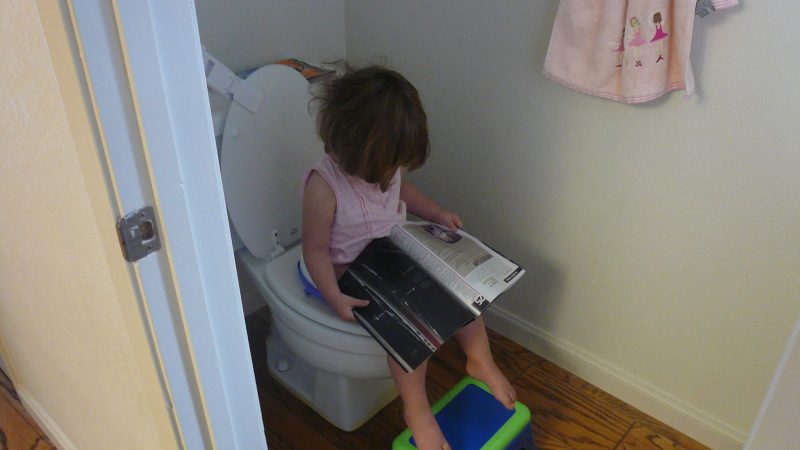
This approach can help children learn to associate using the toilet with the feeling of needing to go, and it can also be more convenient for parents since there’s no need to clean and maintain a separate potty chair.
However, some children may be intimidated by the size and height of the toilet, so it’s important to ensure they feel secure and comfortable before attempting to use the toilet for the first time.
You can try using a step stool to help your child climb onto the toilet, and you may also want to consider using a special seat insert with handles or a built-in splash guard to help them feel more secure.
With patience, consistency, and a positive attitude, most children can learn to use the toilet directly without needing a separate potty chair.
How To Potty Train Without a Potty?
Potty training without a potty may seem daunting, but it’s doable. Here’s a list of helpful tips for doing so:
- Use a child-sized seat that attaches directly to the regular toilet seat: A child-sized seat can help your child learn to associate using the toilet with the feeling of needing to go, and it can also be more convenient for parents since there’s no need to clean and maintain a separate potty chair.
- Have your child sit on the toilet backwards: This method can help them feel more secure and comfortable on the toilet, and it can also help them see what’s happening when they go.
- Use a step stool to help them climb onto the toilet: A step stool can make it easier for your toddler to get on and off the toilet independently and help them feel more confident and in control.
- Use positive reinforcement to encourage their progress: Celebrate every success, offer praise and rewards, and be patient and supportive throughout the process.
How To Go Diaperless in Public
Being diaperless in public during potty training can be scary, but it can be done with some preparation and planning. The following tips can help you navigate this process:
- Plan ahead: Before leaving the house, ensure your child has gone to the bathroom and is wearing appropriate clothing that is easy to remove in case of accidents.
- Bring a change of clothes: Accidents can happen, so having a change of clothes on hand is important. Bring a spare set of clothes and a plastic bag to store any soiled clothing.
- Use training pants or pull-ups: While it’s generally recommended to train without diapers, some parents may prefer to use training pants or pull-ups during outings to help their child feel more independent and confident.
- Scout out restrooms: Before you go out, locate the nearest restrooms, as this will make taking your child to the bathroom easier when needed.
- Use a portable potty seat: If your child is uncomfortable using public restrooms, consider using a portable potty seat that can be placed on top of a regular toilet seat.
Lastly, stay patient and supportive throughout the process. Accidents will happen, but with time and practice, your child will become more comfortable using public toilets.
Closing Thoughts
We hope you found this article helpful in your potty training journey.
As already mentioned, remember every child is different, and there’s no one-size-fits-all approach to potty training. You can help your little one successfully transition to using the potty with patience, consistency, and a positive attitude.
Good luck!
